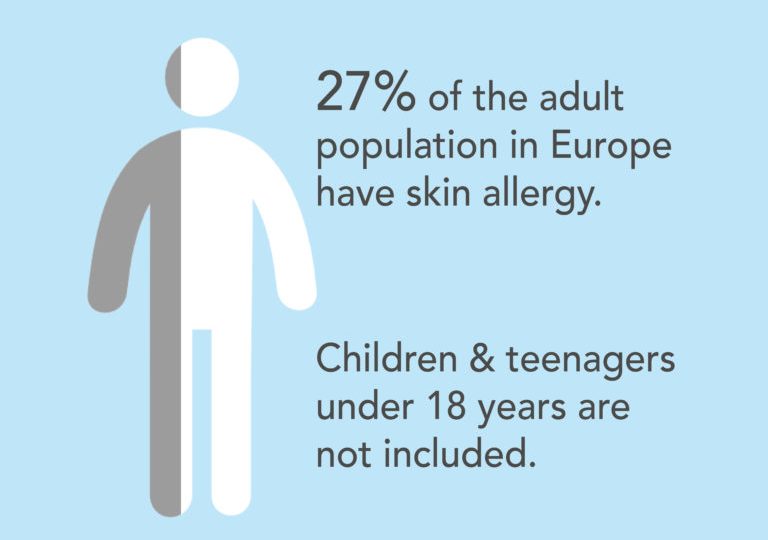Skin Allergy – Facts and Fiction

by CEO Lene Stiil
Every day there are many words both in writing and spoken about skin. Therefore, we have gathered some information to give our take on the correct use of facts. We have three posts ready – the first is about statistics.
Statistics, numbers and magic
Numbers are always interesting; they can quickly give us insight into a specific subject and understanding of the seriousness or promise of hope. When it comes to skin allergy, numbers are almost always difficult. In order to use the numbers that researchers, dermatologists and other parties in the field derive at, the numbers must be found using the same method and recorded correctly. In Denmark, for a long time we have been exceptional in this area, among other things because dermatologists cooperate with Videncenter for Allergi so that the information about patients is collected by the same method, whether you visit a doctor in Aalborg, Svendborg or Hvidovre.
Numbers covering skin allergy are also difficult because the studies that are performed often have to take place over a long period of time to show development and significance. Or put in other words; you have to test a lot of patients before you can say something about a single ingredient or the area’s development as such.
These days you will often encounter two numbers: 27% and 10.7%.
The twenty-seven first. Dermatologists in five European countries have tested grown-ups in order to decide whether they were allergic to one or more ingredients. After publication of the results back in 2015 all researchers, dermatologists and organizations like our own have said that 27% of the adult population in Europe is allergic to one or more ingredients. There are two important pieces of information here: the number 27 and the word ‘adults’. Adults cover everyone between 18 and 74 years.
When a company, association or seller of a product, is reproducing the results of the study, one can easily forget or overlook the meaning of the word ‘adults’. But it is crucial for the correctness of the number and the understanding of skin allergy. The number is bad enough, even though it is the adult population alone. But it would be far worse if it was the total population – that is, also babies, children and young people.
Then there are 10.7%. This number is used to describe the number of women in Denmark who are allergic to perfume. Fortunately, that is not correct. Or at least that is not what studies by Danish researchers show. They show that the number of women with eczema who ALSO has perfume allergy is 10.7%. Here the important words are ‘eczema patients’. So if you read or hear someone say that every tenth of Danish women have perfume allergy, you may want to add: Yes, if we talk about female eczema patients.
AllergyCertified is committed to certifying products every day to make it easier for everyone to prevent skin allergy. We closely follow developments in the field, and we spread all the information we can overcome so that everyone has the opportunity to become more aware of allergy and how we can each live a skin friendly life. Help us spread the numbers here so that we will use them correctly in the future.
Tomorrow we write about the eternal cosmetic struggle between natural and synthetic.
